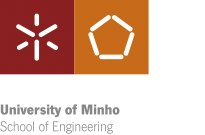The Advisory Council of
the School of Engineering of the University of Minho (EEUM) is the consultative
body to advise the School’s government bodies regarding strategic definition
subjects. Composed of nine personalities of recognised merit in the fields of
their activity, these members have the mission to advise the School on issues
related to pedagogical, scientific and interaction with society activities. In
this edition, we spoke with Mário Domigues, Chairman of the Board of Somelos
Group, in Guimarães.
How important is it to be a member of the EEUM’s Advisory Council?
It is an honour to be invited to a position that I consider very important. A member of the Advisory Council has a huge responsibility, as one must advise on issues that are decisive for the future of the School of Engineering.
Overall, which are the contributions of an external member to this Advisory Council?
I understand that the invitation has to be directed to people with some experience, and capable of leading it to rigorously define the paths that the School should consider as the most successful to achieve its goals. Comparing to the other Advisors, my main differentiation is that I am an economist. Perhaps this academic distance from Engineering can also provide a different vision. On the other hand, I can also bring the experience of someone who has been in the textile industry for 40 years.
What is the balance of the evolution of the EEUM in recent years, under the vision of the current Advisory Council?
The dynamism of the School’s governing team is something I appreciate. I feel that some of the solid ideas resulting from the EEUM’s Strategic Plan have come to the practice in a very positive way. In these three years, I notice that the School has taken positive steps, and it is with pleasure that I feel involved in this progress.
Do you consider the relationship between Somelos and the School of Engineering particularly relevant?
The textile sector was an unloved sector and I think this was also reflected in the university for a long time. It was difficult to find students because they had no interest in this area. However, the textile sector had a huge and positive evolution, and we have been accompanying the EEUM in the Textile Engineering scientific area from its beginning. We have collaborated several times on very interesting projects, such as the “High-tech Fashion” project within the scope of the PT21 mobilising programme, and we are going to start a new project now. We have often turned to the University on themes of our current activity and this relationship has always been very positive.
The connection to the EEUM is also reflected in the student’s integration in the company, not only in projects and internships’ proposals, but also as far as our employees are concerned. Some of them were or still are students of the School. It is very interesting to provide a practical industrial experience to those who visit us or collaborate with our company, through an internship, for example.
What other areas of Engineering contribute to the technological innovation of the business group on a daily basis?
Areas related to informatics, mechanics or electronics. Normally, we are interested in Engineers with a broader intervention spectrum, despite their basic training, as they usually also have management duties. This means an Engineer will be managing a team of professionals and, sometimes, working in an area with several competences joined together. I believe that that the School bears this in mind, as they complement their graduates’ training with something more that adds to the students’ knowledge and facilitates their integration in the professional activity.
Which collaborations between the company and EEUM, as far as R&D&I projects, do you point out?
A structured project with external visibility was the “High-tech Fashion”, a project developed within the scope of the PT21 mobilising programme. In collaboration with EEUM’s 2C2T research centre, we sought to develop new yarn and technical fabrics for fashion, in particular bi-elastic thin fabrics and core-spun hybrids. The others are more specific projects.
We will soon start a new project that follows somehow PT21’s guidelines, since the challenge will be to create a new product with new features. Therefore, I believe that we are talking about a very interesting project.
Is there any further challenge posed to the School of Engineering?
I would say this will certainly happen with the development of our activity and throughout our close relationship with the School. Although there is no project in the short term, I know it will happen.

